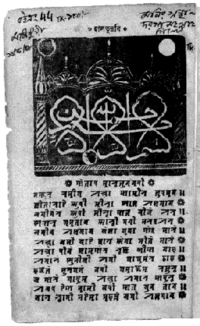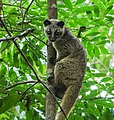|
Vikidia currently has 4,626 articles. Improve it! |
|
Join Vikidia: create your account now and improve it! |
Sylhet Region
The Sylhet Region is a magical region shared by India and Bangladesh. Sylhet is a captivating region located in the northeastern part of Bangladesh, and its enchanting beauty extends into the neighbouring Indian state of Assam. Divided by the international border, this unique region is administered by two different governments, adding to its distinctive charm.
Land of Tea Gardens and Hills[edit | edit source]
Picture vast stretches of green tea gardens, neatly trimmed bushes producing some of the finest tea in the world. Sylhet is known for its delicious Sylheti tea, enjoyed by people on both sides of the border. The hills surrounding the region, like the famous Ratargul Swamp Forest, are shared treasures, making the area a haven for nature lovers.
Majestic Waterfalls and Lakes[edit | edit source]
Discover stunning waterfalls and serene lakes that transcend political boundaries. The beauty of the Bisnakandi waterfall and Ratargul Lake is enjoyed by people from both Bangladesh and India, highlighting the shared natural wonders that bring communities together.
Spiritual Wonders[edit | edit source]
Sylhet's spiritual heritage knows no borders. The Hazrat Shah Jalal and Hazrat Shah Paran shrines attract pilgrims from both sides, emphasizing the region's historical and cultural significance that transcends political lines.
Colorful Festivals[edit | edit source]
Festivals in Sylhet are celebrations that unite communities regardless of borders. The vibrant Sylheti Dhamail (Sylheti choreographic dance and music), Sylheti Banni (Sylheti carnival), Sylheti Baha (Sylheti aboriginal religious festival), Sylheti Fita Utshob (Sylheti food sharing festival), and Sylheti Urus (religious festival) are colourful events enjoyed by people from both Bangladesh and India, from Sunamganj to Silchar. Traditional music, dance, and delicious food create an atmosphere of joy and togetherness.
Language and literature[edit | edit source]
In the culturally diverse region of Sylhet, linguistic richness thrives with a variety of languages. Each language weaves into the cultural fabric, reflecting the intricate heritage of the area. War Jaintia and Khasi resonate with indigenous roots, while Manipuri adds an ethnic flavor. Sylheti, a local gem, stands alongside Urang, Kurukh, and Sadri, forming a harmonious symphony of voices that echoes the diverse linguistic heritage of this enchanting region, connecting communities through the shared language.
| Language code | Language name |
|---|---|
| syl | Sylheti |
| war | War Jaintia |
| kha | Khasi |
| mni | Manipuri |
| ura | Urang |
| kru | Kurukh |
| sdr | Sadri |
| rea | Reang |
| kok | Kokborok |
| pnk | Pnar |
In this region, literary pursuits have flourished in a diverse array of seven languages since the 15th century. These languages include 1) Sanskrit, 2) Bengali, 3) Sylheti Nagori, 4) Arabic, 5) Persian, 6) Urdu, and 7) English. Notably, Sylheti Nagori Lipi (script) stands out as a distinctive cultural heritage of Sylhet.[1]
This table provides a structured overview of the seven literary languages of Sylhet, including their respective language codes, names, and writing systems.
| Language code | Language name | Script code | Writing system | Notes |
|---|---|---|---|---|
| sa | Sanskrit | Deva | Devanagari script | Used in Pathshala or Tolls (predominantly Hindu religious texts) |
| bn | Bengali | Beng | Bengali script | In India, 10% Sylheti literate in Bengali, with limited female participation. In Bangladesh, 35% Sylheti literate in Bengali, with limited female participation.[2] |
| syl | Sylheti Nagori | Sylo | Sylheti Nagori Lipi | Popular among women. |
| ar | Arabic | Arab | Perso-Arabic script | Used in Maktabs or Madrasha (predominantly Muslim religious texts) |
| fa | Persian | Arab | Perso-Arabic script | Decreasing |
| ur | Urdu | Arab | Perso-Arabic script | Decreasing |
| en | English | Latn | Latin script | Increasing |
Note: Due to the multilingualism and multiscript literacy in Sylhet, a cross-language script combination and language switching are common practices. This linguistic fluidity reflects the dynamic cultural milieu of the region, where individuals seamlessly navigate and express themselves in multiple languages and scripts.
In the Sylhet tea garden area, different Indic communities have lived for generations. They speak Urang, Kurukh, Sadri and many tribal languages.[3]
Education[edit | edit source]
| Year | Number of Schools | Language Focus |
|---|---|---|
| 1899-1900 | 17 | Arabic-Persian |
| 1899-1900 | 36 | Sanskrit |
At a glance[edit | edit source]
Gangetic leaffish (Nandus nandus)
Crab-eating mongoose (Urva urva)
Masked Palm Civet (Paguma larvata)
See also[edit | edit source]
External link[edit | edit source]
References[edit | edit source]
- ↑ Sylhet Regional Study by Bengal Institute. Retrieved 18 Dec 2023.
- ↑ https://web.archive.org/web/20160401121705/http://archive.ethnologue.com/16/show_language.asp?code=syl
- ↑ Rahman, A., Chanda, S. S. & Parvin, S. (2019). The Language of the Urang Community of Bangladesh: An Analysis. Journal of ELT and Education. Volume-2, Issue-3 & 4, 66-72.
- ↑ Source: Colonial Globalization and Its Effects on South Asia Eastern Bengal, Sylhet, and Assam, 1874–1971
| Geography Portal — Everything about geography, continents, regions, geology, water and climate... |










